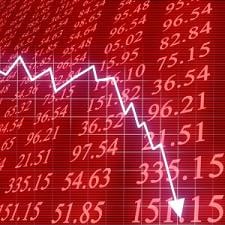
U.S. stocks fell sharply on Sept. 3 as weak manufacturing reports and a decline in construction spending fanned fears of an economic slowdown.
According to preliminary data at market close, the benchmark S&P 500 lost 118.64 points, or 2.10 percent, to end at 5,529.76 points, while the Nasdaq lost 576.06 points, or 3.25 percent, to 17,137.56. The Dow Jones Industrial Average fell 618.72 points, or 1.49 percent, to 40,944.36.
Treasury yields sank, suggesting investors were seeking refuge in the perceived safety of bonds, as factory data released by the Institute for Supply Management (ISM) and S&P Global showed manufacturing mired in weakness and, as some analysts believe, pointing to sharply slowing economic growth.
“Investors are wondering are we heading into a recession quicker than was thought or does the Fed have this under control with rate cuts going forward,” said Robert Pavlik, senior portfolio manager at Dakota Wealth in Fairfield, Connecticut. He added that the manufacturing data “certainly didn’t help.”
“Slower than expected sales are causing warehouses to fill with unsold stock, and a dearth of new orders has prompted factories to cut production for the first time since January. Producers are also reducing payroll numbers for the first time this year and buying fewer inputs amid concerns about excess capacity,” Chris Williamson, chief business economist at S&P Global, said in a statement.
“The combination of falling orders and rising inventory sends the gloomiest forward-indication of production trends seen for one and a half years, and one of the most worrying signals witnessed since the global financial crisis.”
“Demand remains subdued, as companies show an unwillingness to invest in capital and inventory due to current federal monetary policy and election uncertainty,” Timothy Fiore, chair of ISM’s manufacturing business survey committee, said in a statement.
Despite falling demand and a drop in production, factory costs increased, according to the S&P Global report. Rising wages and high shipping rates pushed up input costs, which rose in August at their fastest pace since April 2023, suggesting a possible stagflationary trend.
Analysts at ING said the manufacturing data suggests that economic output is poised for a significant slowdown.
“There is a worrying narrowing of the pockets of strength,” James Knightley, chief international economist at ING, wrote in a note. “Just 22 [percent] of industry is experiencing rising orders and just 17 [percent] are seeing rising production. Historically, this weakness in output and orders points to a sharp slowing in GDP growth.”
“The trend is certainly softening,” Knightley wrote. “The outlook for residential construction is not great given the weakness seen in home builders sentiment as a lack of affordability continues to constrain demand.
He said that two consecutive negative monthly prints suggest a “notable cooling” in nonresidential construction.
The ING analyst added that the construction spending report also suggests that support from the Inflation Reduction Act is running out, with construction activity tied to semiconductor manufacturing appearing to wane.
“So with manufacturing languishing and construction cooling, there is going to be an [increasing] reliance on the service sector to provide economic growth,” he said.
Besides Tuesday’s slump on Wall Street, European stocks also fell in their worst session in nearly a month, as the gloomy U.S. manufacturing data fanned concerns about a slowdown in global growth back to the forefront.
The pan-European STOXX 600 index ended the session down nearly 1 percent, with Germany’s DAX slipping by more than 0.9 percent from record highs touched earlier in the session. Stocks in France, Spain, and Italy dropped by between 0.9 percent and 1.3 percent.
Reuters contributed to this report.
Comment on Global Research Articles on our Facebook page
Become a Member of Global Research
Source link

